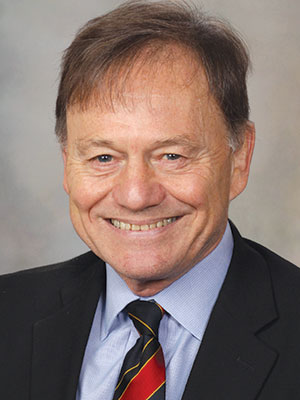
A Sunday afternoon session will feature a pair of experts who will discuss new and evolving therapeutic advances in the treatment of osteoarthritis (OA) and the latest advances in diagnosing and managing prosthetic joint infection (PJI).
As part of the session OA: Perspectives & Emerging Therapies, Christopher Evans, PhD, DSc, Professor of Orthopedics, Professor of Physical Medicine and Rehabilitation, and Director of the Musculoskeletal Gene Therapy Research Laboratory at the Mayo Clinic in Rochester, MN, will discuss the latest gene therapies in development for OA, including research he and others are conducting on new ways to deliver therapeutic agents directly into diseased joints. The session takes place from 4:30 – 5:30 pm in Hall B1, Building B of the Georgia World Congress Center.
“There are a lot of proteins and other biologics that have the potential to treat osteoarthritis effectively, but it’s very difficult to deliver them into joints and to keep them there at optimal therapeutic concentrations for a long period of time,” Dr. Evans said. “The gene transfer approach is a biological way of overcoming that obstacle. If you put a protein in a joint, it goes out in a matter of hours; however, if you put a gene in a cell in a joint, it can stay there for months, if not years, and continue to produce the therapeutic gene product. It basically turns the joint into a factory that makes its own medicine.”
Over the past several years, Dr. Evans and his research colleagues have developed the technology to deliver a modified adeno-associated virus (AAV) containing the gene that produces the protein interleukin-1 receptor antagonist (IL-1R a), which has a therapeutic effect in OA and is sold as the drug anakinra, directly into a diseased joint.
“We’ve shown in preclinical experiments that if you put our virus into an animal’s joint, the virus is restricted to the injected joint and, importantly, it gets into the cartilage cells, the chondrocytes, which are otherwise hard to target,” Dr. Evans said. “So, we’re able to genetically modify the chondrocytes while they’re sitting in the cartilage and they make their own anakinra for an extended period of time — in horses, we have observed it persisting for at least 18 months, and it’s still going.”
Based on the success of their early safety and efficacy studies in animals, Dr. Evans said they are now in the early stages of a phase 1 clinical trial.
“We’re currently just dosing a small number of patients to look for safety, but the fact that we’ve got it through the FDA is very encouraging,” he said. “Depending on the outcome of this and subsequent trials, this may be a therapy we can use in the not-too-distant future.”

Also during this session, Susan Goodman, MD, Professor of Clinical Medicine at Weill Cornell Medicine and Attending Physician at the Hospital for Special Surgery in New York, will talk about the prevalence and risk factors for prosthetic joint infections in patients with inflammatory arthritis (IA), new advances in rapid diagnosis of joint infection and optimal management strategies.
“While the rates of utilization of prosthetic joints is going up, meaning the absolute number of patients with prosthetic joints has increased, there has been no decrease in prosthetic joint infection complications,” Dr. Goodman said. “For patients with inflammatory arthritis, it’s even more complicated because, while patients with osteoarthritis are really only at greatest risk for the first year or two after the surgery, patients with inflammatory arthritis remain at risk for the lifetime of the joint.”
Diagnosing a PJI in these patients is also challenging because many of the normal features that are typical of IA are the same features found in prosthetic joint infection, she said, noting that the most strongly associated factor in treatment failure of PJIs is delay in diagnosis.
“Right now, there isn’t a great method to really substantiate the diagnosis, so we have to approach it pretty aggressively. Whether it’s with an arthroscopic treatment or open surgical treatment, it’s important to be pretty aggressive in the management,” Dr. Goodman said. “Although it really is a challenging diagnosis, there are some new methods on the horizon using things like bacterial genetic sequencing that may allow us to separate out routine arthritis flares from infection and treat patients sooner.”


